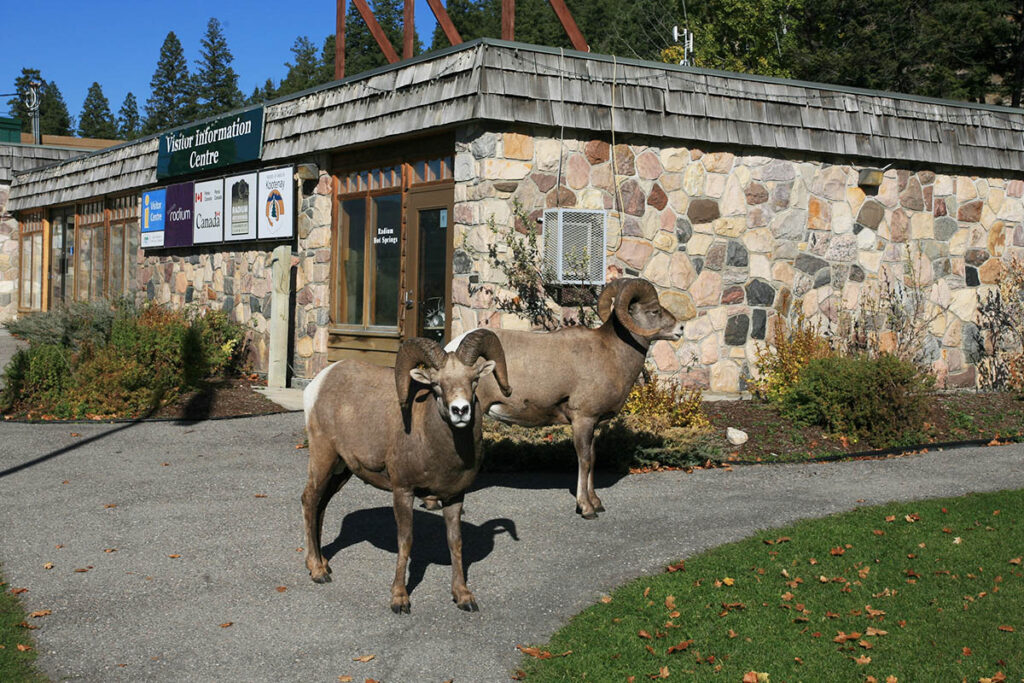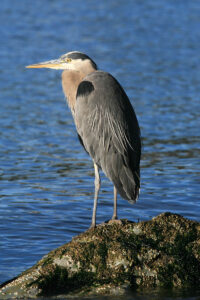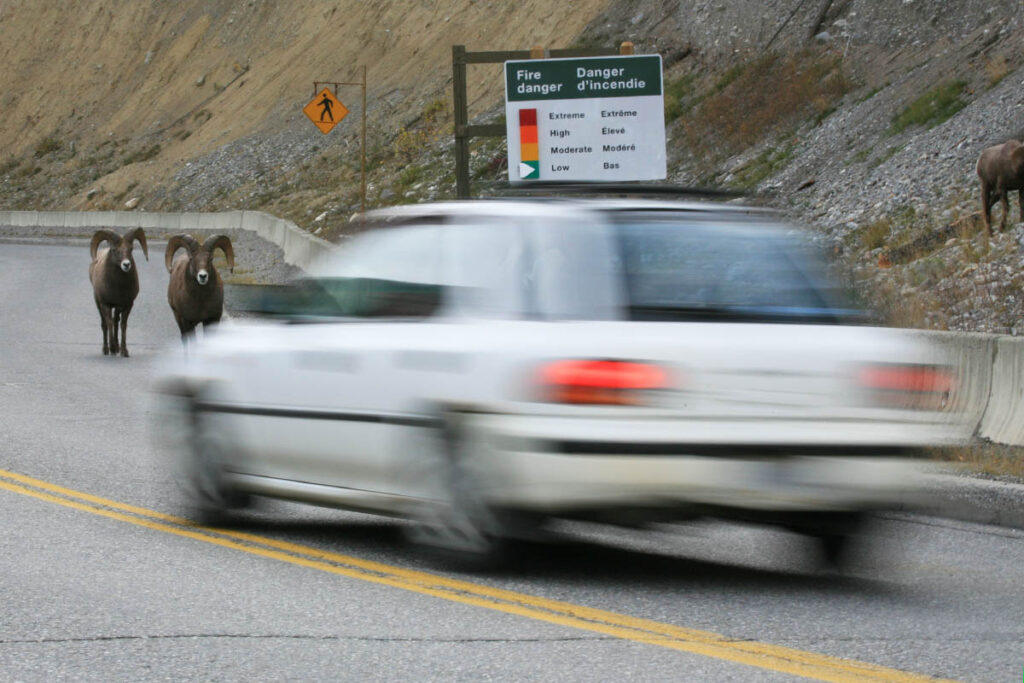Columbia Valley Wildlife Viewing
Columbia Valley wildlife viewing is a major attraction as wildlife is abundant in the valley and can be viewed year-round.
Large mammals are present throughout the Columbia Valley, although they tend to remain at higher elevations away from populated areas. Species you are most likely to see are white-tailed deer, mule deer, and black bears.
The exception is bighorn sheep, which are present in large numbers around Radium Hot Springs. They live in and around the town year-round but are most obvious in November, when large males clash horns, often on the main street of town.
For descriptions of all wildlife species present in the Columbia Valley, visit our Columbia Valley Nature Guide.

Bighorn sheep are often seen in the village of Radium Hot Springs.

Columbia River Wetland
Birdwatchers will be enthralled by the concentration of birds present in the Columbia River Wetland between Radium Hot Springs and Golden. More than 100 species of birds live among the sedges, grasses, dogwoods, and black cottonwoods surrounding the convoluted banks of the Columbia. Of special interest are blue herons in large numbers and ospreys in one of the world’s highest concentrations. The wetland also lies along the Pacific Flyway, so particularly large numbers of ducks, Canadian geese, and other migratory birds gather here in spring and autumn.
Elizabeth Lake Bird Sanctuary
On the south side of Cranbrook, Elizabeth Lake Bird Sanctuary is a large area of protected wetlands that is a haven for many species of waterfowl, including Canada geese, teal, and ringneck, scaup, redhead, bufflehead, goldeneye, and ruddy ducks. You can also see coots, grebes, black terns, and songbirds.
Columbia Valley Wildlife Photography Book
Even if you’re not interested in photography, Canadian Rockies Wildlife Photography, an eBook by renowned wildlife photographer Wayne Lynch, is a great resource for searching out local wildlife. It includes all the very best places to view wildlife along the Columbia Valley.
Wildlife Safety in the Columbia Valley
An abundance of wildlife is a major attraction in the Columbia Valley, especially the Columbia River Wetland. To help preserve this precious resource, obey fishing and hunting regulations and use common sense.
DO NOT FEED THE ANIMALS. Many animals may seem tame, but feeding them endangers yourself, the animal, and other visitors, as animals become aggressive when looking for handouts (even the smallest critters, such as squirrels).
STORE FOOD SAFELY. When camping, keep food in your vehicle or out of reach of animals. Just leaving it in a cooler isn’t good enough.
KEEP YOUR DISTANCE. Although it’s tempting to get close to wildlife for a better look or a photograph, it disturbs the animal and, in many cases, can be dangerous.
DRIVE CAREFULLY. The most common cause of premature death for larger mammals is being hit by vehicles, especially along Highway 93/95.

Bighorn sheep are often seen on local highways.
